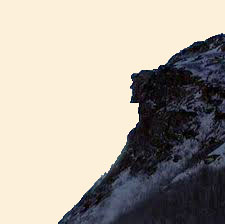Reading Questions
Reading Answer Explanations
2011-2012 Specialized High Schools Student Handbook
(Questions in new window/tab)

2012-2013 Specialized High Schools Student Handbook
(Questions in new window/tab)

2011-2012 Specialized High Schools Student Handbook
(Answers in new window/tab)

2012-2013 Specialized High Schools Student Handbook
(Questions in new window/tab)

PASSAGES
Passage 1:

The beaver, the state animal of New York, has long played a role in the history of the state. Before European colonists arrived, Native Americans hunted this large rodent for fur pelts and meat. The colonists nearly exterminated beavers through overtrapping and destruction of forest habitat. During the twentieth century, however, careful management increased the beaver population of upstate New York from only
10
about a dozen in 1895 to tens of thousands a century later.
This remarkable comeback has had significant effects on the environment. Most people know that beavers build dams, but few realize that these industrious rodents actually shape the character of the streams and forests in which they live. An average adult beaver cuts down more than a ton of wood per year. Beavers cut down only
20
mature trees, and several beavers at work can soon open up the forest area around a pond to sunlight.
Once a dam is built across a stream, the water behind the dam forms a pond, which is warmer and more slow-moving than the stream it replaced. The pond tends to retain sediments and organic material, causing a shift in its mix of nutrients. In response, the plant and insect species that live in the pond
30
change as well. These changes provide more food and habitat for fish and birds, which in turn attract larger animals. Thus, the beaver helps to determine the plant and animal population of its neighborhood.
As the beavers selectively cut deciduous trees such as aspen and birch from the stream banks, conifers such as spruce gradually take over the area. Eventually,
40
when the area no longer has trees desirable for food or building supplies, the beaver colony moves on. However, the effects of beavers on their environment are noticeable to the knowledgeable observer long after the beavers have left. Their dams eventually fall apart, and the beds of their former ponds, rich in nutrients, may become farmland, grassy meadows, or lush new forests. New streambeds may develop in
50
these former pond areas, and the meadows and farmlands that occupied them may begin to erode, continuing the cycle of stream–beaver pond–meadow–stream. In Wyoming, wildlife scientists at the Bureau of Land Management have captured beavers and moved them to rapidly flowing streams in an attempt to halt soil erosion. The reported success of this effort suggests that beavers can be valuable allies in protecting
60
natural resources for future generations.
Passage 2:

For centuries, a stone-faced old man looked across the White Mountains of northern New Hampshire. The Old Man of the Mountain was not a person, but rather a distinctive natural rock formation. From most viewpoints, it looked like a random heap of stones. Seen from the north, however, it resembled the profile of a stern, elderly man looking east. Until its collapse in 2003, it was one of the most
10
photographed sights in New England.
According to geologists, the Old Man was formed during the last Ice Age some 10,000 years ago. Perched near the top of Cannon Mountain, 365 meters above Profile Lake, the face was about 12 meters tall and 8 meters across. When European-Americans settled in the area in the early 1600s, they heard Native American legends of a mountain with a great stone face. In 1805,
20
two surveyors were the first European-Americans known to have seen the Old Man. In 1905, a local climber discovered that the face’s forehead had begun to slip from the cliffside. The slide was stopped when turnbuckles were installed. This system of screws and cables pulled the cracks tightly together, stabilizing the rock formation. Over the years, more turnbuckles were added to close other cracks. The Old Man received
30
several “face-lifts” as well, using glue, wire, and fiberglass.
The Old Man’s profile became the symbol of New Hampshire, which is known as the “Granite State.” Its people have always taken pride in their state’s rocky geography and their own strength and independence. Images of the Old Man appeared on license plates, the shoulder patches on police uniforms, and the New Hampshire quarter
40
issued in 2000.
During the 1970s, an engineering company determined that the Old Man consisted of five granite layers, balanced atop one another. Behind the lowest slab, the Old Man’s “chin,” was a cave, hidden from view.
Only about two feet of the chin was anchored to the cliff. Surprisingly, the Old Man had balanced on its chin for many
50
years.
During the night of May 3, 2003, the Old Man slid from its rocky perch into the valley below, the result of centuries of weathering and temperature extremes. The harsh New Hampshire winters had driven rain and snow into cracks in the granite. Water that freezes in a crack will expand, enlarging the crack and eventually splitting the rock. All that remained was a
60
nondescript rocky slope and a few broken turnbuckles. The collapse prompted an outpouring of articles, poems, and statements from people all over the country. Some laid flowers at the viewpoint on Profile Lake, as though for a funeral. After the collapse, a task force began working to memorialize the Old Man. It received thousands of suggestions, including construction of a plastic replica of
70
the face on the mountainside. While that particular idea was not implemented, a museum was built at the base of Cannon Mountain, and plans have been made for a memorial. All over the state, schoolchildren still study the history and symbolism of the Old Man. He may be gone, but he is not forgotten.
Passage 3:

If Han van Meegeren had kept to his career as an artist, he would have been forgotten years ago. In his native Holland, he was considered a mediocre painter and the critics’ reviews of his work were uncomplimentary. Angered by their rejection, van Meegeren set out in the 1920s to fool these critics into accepting his work as the work of one of the great master painters. The
10
hoax was carefully planned. Van Meegeren decided to create a series of religious paintings, then claim to have “discovered” the lost paintings of Jan Vermeer, the great seventeenth-century Dutch painter.
Other forgers have succeeded in their deception by borrowing elements of style and imagery from several similar works by a painter. Instead of copying any one particular painting, they combine slightly altered details
20
from these related works, such as a pose, face, or piece of furniture, to create a new work. Van Meegeren outdid these forgers. He created not just one, but an entire series of paintings that mimicked Vermeer’s style without duplicating specific details. He also collected works by little-known seventeenth-century painters and stripped the paint from these paintings so that he could use the canvas. When working on his forgeries, he
30
applied paints made in the old ways from old materials. He also used clever techniques to lend the works authenticity. For example, he gave his paintings an aged appearance by exposing them to heat until the surface cracked in the manner of old oil paint.
Next, van Meegeren pretended to have discovered and purchased these “Vermeer” paintings. The art world rejoiced and Vermeer scholars accepted the works without
40
question. Van Meegeren became a wealthy man, selling the pictures to museums and private collectors. He felt that he had been avenged in his bitter quarrels with art critics. It almost worked.
In the end, however, van Meegeren was forced to unmask his own forgeries. Shortly before World War II, one of the fake Vermeers had been sold to Hermann Göring, a high ranking German official. Van
50
Meegeren was arrested after the war as a Nazi collaborator for selling a national treasure to the enemy, a far more serious crime than art forgery. When critics were asked to testify to the authenticity of the painting, they insisted it was a genuine Vermeer. Finally, to prove his innocence by demonstrating that he could forge a Vermeer, van Meegeren painted yet another fake Vermeer while under guard. Chemical
60
tests and x-rays of other “Vermeers” confirmed van Meegeren’s guilt. He was acquitted of collaboration—only to be convicted of fraud.
Sentenced to one year in prison, van Meegeren died in 1947, before the sentence could be carried out. Recently, during a new period of intense interest in Vermeer, there were two major exhibits of the faker’s handiwork. Perhaps van Meegeren would
70
feel he was having the last laugh.
Passage 4:

Archaeologists first succeeded in using tree-ring dating while excavating ancient Pueblo Indian villages in the southwestern United States during the 1920s. At that time, no one knew when the villages had been occupied, or for how long, but the logs used in the buildings provided a clue. Scientists had long known that trees add a new growth ring to their circumferences during each growing season. Drought or early frost results in little
10
growth and narrow rings. Good growing years result in wide rings. Archaeologists knew that by matching identical patterns of wide and narrow rings in sections of two different logs, they could determine which log was older. For example, a log with a certain pattern of rings near its outside edge would indicate a specific series of good and bad growing seasons. This log would have been cut down before a log of comparable
20
size that shows the identical pattern near its center. But how could these ring patterns help determine the actual dates for the abandoned Pueblo villages? Archaeologists had already used the ring patterns of trees with overlapping lifetimes to establish a tree-ring chronology for the southwestern United States that went back to a.d. 1260. That work had been done in a Hopi village called Oraibi. Oraibi had been continuously inhabited since
30
before the arrival of the first Spanish explorers in 1540.
That same team of archaeologists also developed a relative, or “floating,” chronology for the abandoned Pueblo villages by matching up the ring patterns of the various logs used in the buildings. With this “floating” chronology, the archaeologists could tell which logs were older and which were more recent. None
40
could be precisely dated, since no log had a pattern of tree rings that matched any part of the established chronology. It was clear from this evidence, however, that the buildings must have been constructed before a.d. 1260.
Finally, continued excavations turned up a “key” beam. The outer ring pattern of the key beam overlapped the earliest rings in the established chronology. Furthermore, its
50
inner ring pattern matched the pattern formed by the most recent rings of the “floating” chronology. Thus, the chronology for the abandoned Pueblo villages could be known with certainty. Counting backward from the present, the archaeologists estimated that the villages had been occupied between a.d. 900 and a.d. 1300. The tree rings also suggested why the villages had been abandoned. The rings
60
for the years a.d. 1276 to 1299 were very thin, indicating a severe drought that lasted for 23 years. Most likely the villagers had left their homes to search for a more hospitable climate.
Passage 5:

Most people—if they think about bubbles, suds, and lather at all—consider them to be fairly ordinary physical occurrences. But scientists have been studying foams, particularly aqueous (watery) foams, for more than 300 years. The phenomenon of foam creation is quite complex, and only recently have scientists begun to understand how foams are formed.
Aqueous foam is produced when a gas—air,
10
for example—is dispersed within a liquid, such as water. However, a pure liquid produces an unstable froth, so a third ingredient must be added to stabilize the froth into foam. The most common stabilizers, or foaming agents, are soaps and proteins. These stabilizers are also called surfactants, or surface-active agents.
Surfactant molecules chemically disturb the surface of the liquid, lowering its surface
20
tension and creating a foam of bubbles, each encased in a watery film. The dispersing gas continues to build bubbles until the liquid is partially or completely converted to foam, with a surface area far greater than that of the original volume of liquid.
Foams have a characteristic life cycle. During the first stage, the liquid content is high and the foam is characterized by spherical bubbles of nearly uniform size, each with a
30
relatively thick outer film of liquid. As the foam ages, the liquid drains away, and the foam “dries.” The bubbles are no longer spherical; they have become polyhedrons with multiple flat surfaces. Eventually, outside forces—usually evaporation or vibration—cause the film walls of the bubbles to collapse, and the foam disappears.
The soap foams of shampoo, bubble bath,
40
and dishpan suds were developed largely to satisfy consumer expectations. Protein foaming agents create whipped cream and marshmallows. Still other foams have important practical applications. Perhaps best known of these is the foam used in fire extinguishers. It puts out oil or gasoline fires by smothering them in a blanket of foam made of carbon dioxide bubbles stabilized by a protein-based surfactant. In
50
general, these extinguishers have the advantage of minimizing the extensive water damage caused by more traditional fire-fighting methods. Less well-known are the applications of foam technology to the recovery of oil from deep wells. Water is often present along with this energy-producing resource, and the water must be removed before the well can become productive. Drillers introduce a gas, along
60
with an appropriate surfactant, into the well, and then pump out the resulting foam. Thus the water is removed, leaving a more productive oil well.
